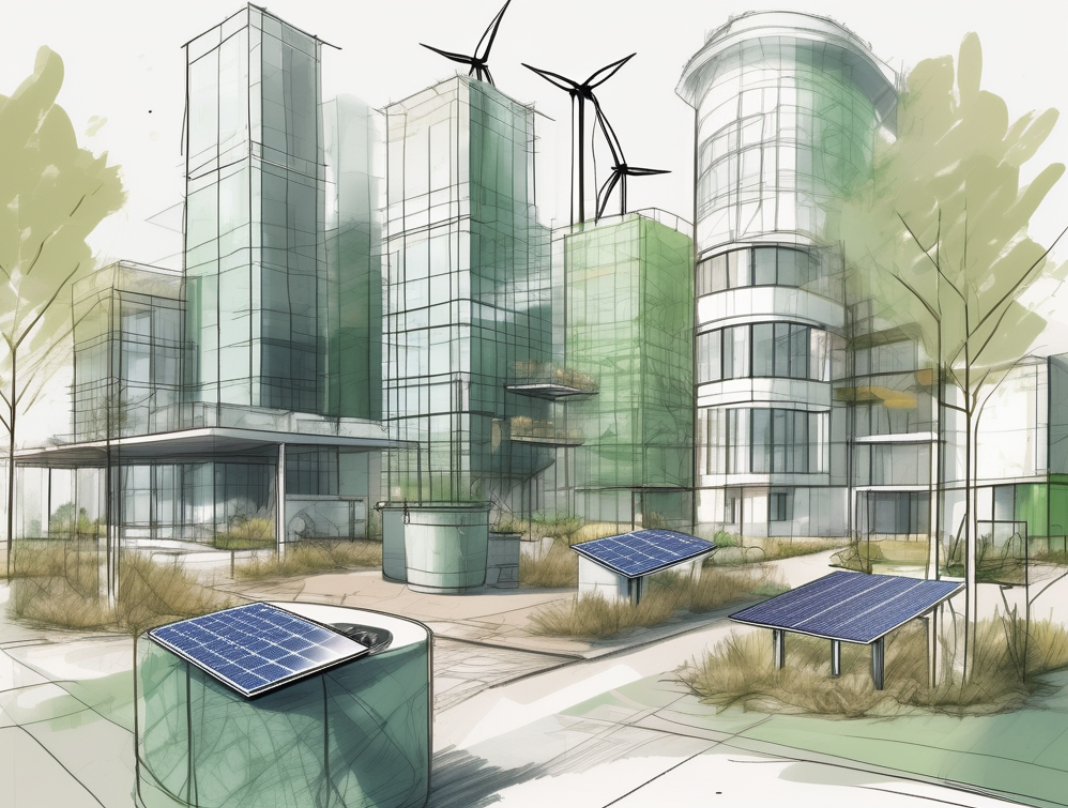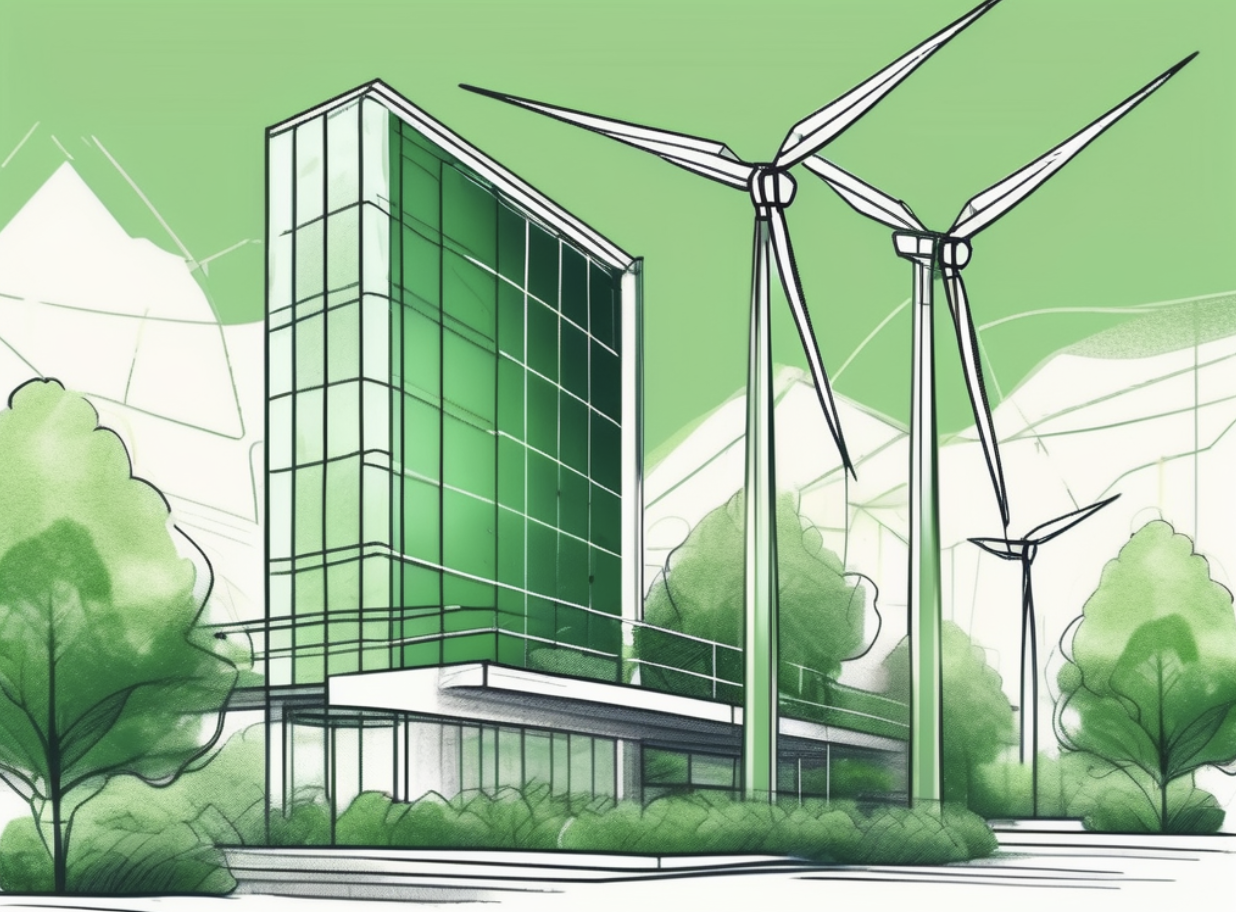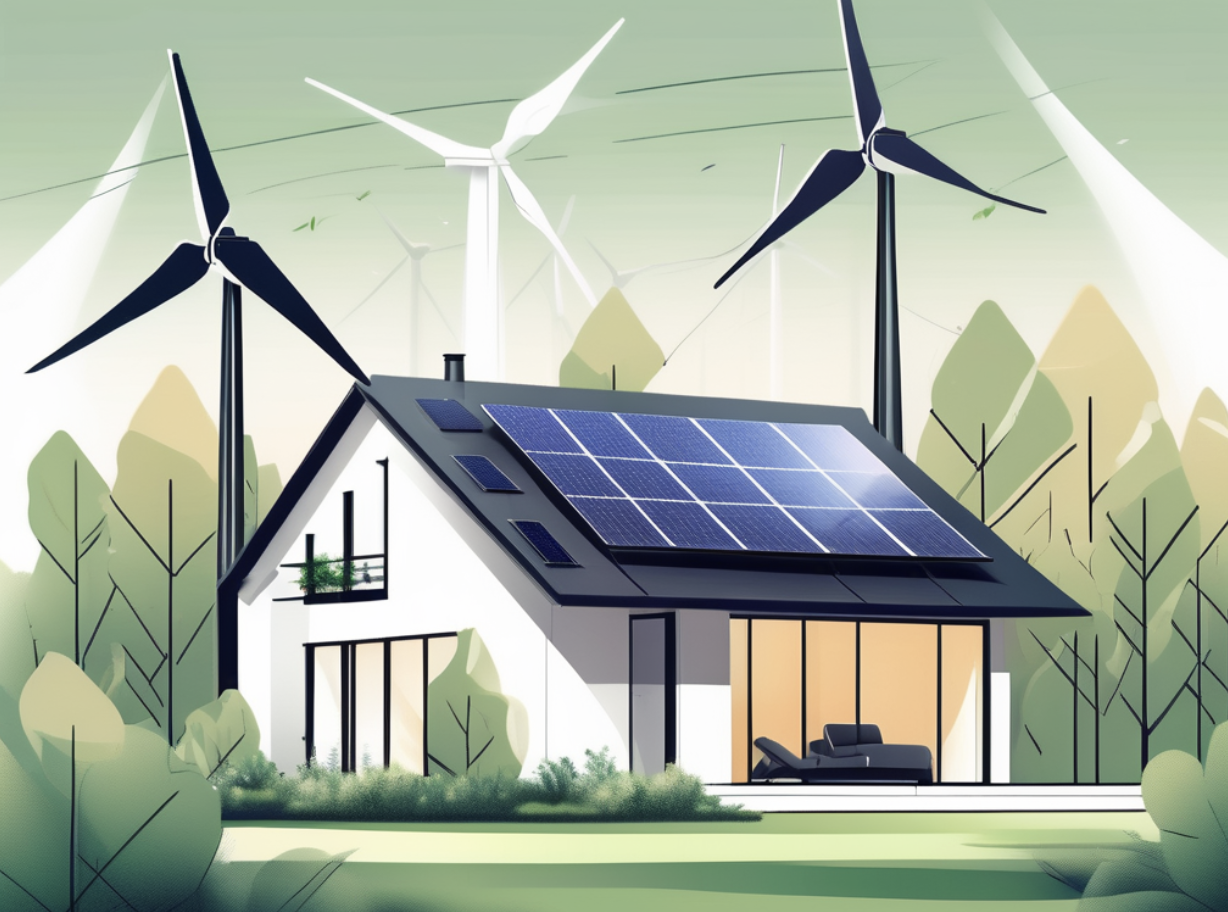What stages of real estate are impacted by sustainability
What stages of real estate are impacted by sustainability
Discover how sustainability is revolutionizing the real estate industry by exploring the various stages of real estate development that are impacted.

Sustainability has become a crucial consideration in various industries, and real estate is no exception. As the world becomes more aware of the environmental impact of human activities, there is a growing emphasis on integrating sustainable practices in all stages of real estate development, management, and operations. In this article, we explore the different stages of real estate that are impacted by sustainability and highlight the benefits of adopting sustainable practices in each stage.

Introduction to Sustainability in Real Estate
Introduction to Sustainability in Real Estate
Before delving into the various stages impacted by sustainability, it is essential to understand what sustainability means in the context of real estate. Sustainability in real estate refers to incorporating environmentally-friendly practices that minimize resource consumption, reduce waste, and promote social and economic well-being. By prioritizing sustainability, real estate professionals aim to create buildings and communities that have a positive impact on the environment and enhance the quality of life for the occupants.
One of the key aspects of sustainability in real estate is energy efficiency. With the increasing concern over climate change and the rising cost of energy, it has become imperative for the real estate industry to focus on reducing energy consumption. This can be achieved through various means, such as using energy-efficient appliances, implementing smart building technologies, and utilizing renewable energy sources like solar panels. By incorporating these energy-saving measures, real estate professionals not only contribute to a greener environment but also help occupants save on utility bills.
Another important element of sustainability in real estate is water conservation. As water scarcity becomes a global issue, it is crucial for the real estate industry to adopt practices that minimize water wastage. This can be done by installing low-flow fixtures, implementing rainwater harvesting systems, and promoting water-efficient landscaping. By reducing water consumption, real estate professionals not only contribute to the preservation of this precious resource but also help alleviate the strain on local water supplies.
The Role of Sustainability in Property Development
The Role of Sustainability in Property Development
Property development is a critical stage where sustainability principles can be integrated from the outset. Sustainable property development focuses on creating buildings that are energy-efficient, utilize eco-friendly materials, and consider the surrounding ecosystem. By incorporating green building techniques such as passive design, efficient insulation, and renewable energy sources, developers can reduce the environmental impact of new constructions and lower long-term operational costs.
Furthermore, sustainable property development also involves thoughtful land use planning, preserving green spaces, and promoting walkability and accessibility for residents. By designing communities with a focus on sustainability, developers can create neighborhoods that are both environmentally-friendly and socially inclusive.
One key aspect of sustainable property development is the use of eco-friendly materials. Developers are increasingly opting for materials that have a lower carbon footprint and are sourced sustainably. For example, instead of using traditional concrete, which is known for its high carbon emissions during production, developers are exploring alternatives such as recycled concrete or even using sustainable timber as a building material. These choices not only reduce the environmental impact but also contribute to the overall aesthetic appeal of the development.
In addition to eco-friendly materials, sustainable property development also emphasizes the importance of water conservation. Developers are implementing innovative solutions such as rainwater harvesting systems, greywater recycling, and efficient irrigation methods to minimize water consumption. By incorporating these practices, developers not only reduce the strain on local water resources but also create a more sustainable and resilient community.
Another crucial aspect of sustainable property development is the integration of green spaces. Developers are recognizing the value of incorporating parks, gardens, and green roofs into their designs.
These green spaces not only enhance the aesthetic appeal of the development but also provide numerous environmental benefits. They help improve air quality, reduce the urban heat island effect, and provide habitats for local wildlife. Additionally, green spaces offer residents a place to relax, exercise, and connect with nature, promoting physical and mental well-being.
Furthermore, sustainable property development also considers the social aspects of a community. Developers are focusing on creating neighborhoods that are walkable and accessible, with amenities such as public transportation, bike lanes, and pedestrian-friendly infrastructure. This approach encourages active transportation, reduces reliance on cars, and promotes a healthier lifestyle. Moreover, sustainable communities often prioritize social inclusivity by providing affordable housing options, community centers, and spaces for social interaction, fostering a sense of belonging and community cohesion.
In conclusion, sustainable property development encompasses various elements that go beyond energy efficiency and eco-friendly materials. It involves careful consideration of land use, water conservation, integration of green spaces, and social inclusivity. By adopting sustainable practices, developers can not only minimize the environmental impact of their projects but also create vibrant, resilient, and livable communities for future generations.
Sustainable Design and Construction in Real Estate
Sustainable Design and Construction in Real Estate
Design and construction play a pivotal role in realizing sustainable real estate projects. Sustainable design principles aim to create buildings that minimize their environmental impact throughout their lifecycle. This includes employing materials with low embodied energy, utilizing recycled or recyclable materials, and adopting efficient HVAC systems and lighting technologies.
Additionally, sustainable construction practices prioritize waste reduction, recycling, and responsible sourcing of construction materials. Water-efficient plumbing systems, rainwater harvesting, and graywater recycling are also key elements promoting sustainability in real estate construction. By implementing these practices, the construction industry can significantly reduce the ecological footprint associated with building projects.
One innovative approach to sustainable design and construction is the use of green roofs. Green roofs are vegetated rooftop systems that provide numerous environmental benefits. They help reduce stormwater runoff by absorbing rainwater, which can alleviate pressure on municipal drainage systems.
Green roofs also act as natural insulation, reducing the need for excessive heating and cooling, and thus lowering energy consumption. Moreover, they create additional green spaces in urban areas, improving air quality and providing habitats for wildlife.
Another important aspect of sustainable design and construction is the integration of renewable energy sources. Incorporating solar panels, wind turbines, or geothermal systems into building designs can help generate clean and renewable energy on-site. This not only reduces reliance on fossil fuels but also decreases greenhouse gas emissions. Furthermore, by utilizing these renewable energy sources, real estate projects can achieve energy independence and potentially even generate surplus energy that can be fed back into the grid.
Energy Efficiency and Sustainability in Real Estate Operations
Energy Efficiency and Sustainability in Real Estate Operations
Once a building is constructed, it enters the operations stage, where sustainability remains a crucial consideration. Energy efficiency in real estate operations focuses on reducing energy consumption and associated greenhouse gas emissions. This can be achieved through the use of energy-efficient appliances, lighting systems, and smart building technologies.
In addition to energy efficiency, sustainable real estate operations also encompass waste management, water conservation, and indoor air quality. Implementing recycling programs, employing low-flow fixtures, and ensuring adequate ventilation are just a few examples of sustainable practices that can be applied in real estate operations. These initiatives not only benefit the environment but also contribute to cost savings and improve the overall comfort and well-being of occupants.
When it comes to energy-efficient appliances, there are various options available in the market. For instance, refrigerators with ENERGY STAR certification are designed to consume less energy compared to conventional models. These appliances utilize advanced technologies such as improved insulation and compressor systems, resulting in significant energy savings. By investing in energy-efficient appliances, real estate operators can not only reduce their carbon footprint but also save on electricity bills in the long run.
Another important aspect of sustainable real estate operations is waste management. Implementing recycling programs within the building can help divert a significant amount of waste from landfills. By segregating recyclable materials such as paper, plastic, and glass, real estate operators can contribute to the circular economy and reduce the strain on natural resources. Additionally, composting organic waste can be an effective way to minimize the environmental impact of real estate operations while also creating nutrient-rich soil for landscaping purposes.
Water conservation is also a key component of sustainable real estate operations. By employing low-flow fixtures such as faucets, showerheads, and toilets, real estate operators can significantly reduce water consumption without compromising on functionality. Furthermore, implementing rainwater harvesting systems can help capture and store rainwater for non-potable uses such as irrigation and toilet flushing. These measures not only conserve water but also contribute to reducing the demand for freshwater resources, which are becoming increasingly scarce.
Indoor air quality is another crucial aspect of sustainable real estate operations. Poor indoor air quality can have detrimental effects on the health and well-being of occupants. Real estate operators can ensure adequate ventilation by installing energy-efficient HVAC systems that provide a constant supply of fresh air while minimizing energy consumption. Additionally, using low-VOC (volatile organic compounds) paints, adhesives, and building materials can help reduce indoor air pollution and create a healthier living and working environment.
In conclusion, energy efficiency and sustainability in real estate operations encompass a wide range of practices and technologies. By implementing energy-efficient appliances, waste management programs, water conservation measures, and ensuring good indoor air quality, real estate operators can contribute to a greener and more sustainable future. These initiatives not only benefit the environment but also result in cost savings and improved occupant comfort and well-being.
The Impact of Sustainability on Property Valuation and Investment
The Impact of Sustainability on Property Valuation and Investment
Sustainability considerations have a profound impact on property valuation and investment decisions. Buildings that have achieved green certifications or adhere to sustainable design principles often command higher property values and rental rates. Additionally, sustainable buildings have lower operating costs due to reduced energy consumption, which can attract environmentally-conscious investors.
Investors and financial institutions are increasingly incorporating sustainability criteria into their decision-making processes. Sustainable real estate portfolios are perceived as less risky in the long-term, as they are better prepared to cope with the challenges posed by climate change and increasingly stringent environmental regulations. Therefore, integrating sustainability into real estate investments can contribute to both financial success and a more sustainable future.
One of the key factors driving the increased demand for sustainable properties is the growing awareness of the environmental impact of traditional buildings. As society becomes more conscious of the need to reduce carbon emissions and mitigate climate change, the demand for sustainable real estate continues to rise. This shift in mindset has led to a significant shift in the market, with investors and tenants actively seeking out properties that align with their sustainability goals.
Moreover, sustainable buildings offer a range of benefits beyond just financial returns. They contribute to the overall well-being of occupants by providing healthier indoor environments. Sustainable design principles prioritize natural light, proper ventilation, and the use of non-toxic materials, creating spaces that promote productivity and enhance the quality of life for occupants.
Another important aspect to consider is the long-term resilience of sustainable buildings. With the increasing frequency and intensity of natural disasters, properties that are built with sustainability in mind are better equipped to withstand and recover from such events. This resilience not only protects the investment but also ensures the continuity of operations, reducing potential disruptions and associated costs.
Sustainable Practices in Property Management and Maintenance
Sustainable Practices in Property Management and Maintenance
Property management and maintenance play a vital role in preserving the sustainability goals of real estate projects. Implementing sustainable practices at this stage involves various aspects, such as efficient waste management systems, regular maintenance of equipment and appliances, and ongoing monitoring of energy and water consumption.
Sustainable property management also encompasses tenant education and engagement programs, promoting environmentally-friendly behaviors and encouraging sustainable living. By fostering a sense of responsibility and community involvement, property managers can create a sustainable environment that benefits both the residents and the surrounding ecosystem.
Efficient waste management systems are crucial in sustainable property management. Property managers can implement recycling programs, composting initiatives, and waste reduction strategies to minimize the environmental impact of the property. By encouraging residents to sort their waste properly and providing convenient recycling facilities, property managers can significantly reduce the amount of waste that ends up in landfills.
Regular maintenance of equipment and appliances is another important aspect of sustainable property management. By conducting routine inspections and servicing, property managers can ensure that all systems are functioning optimally. This not only extends the lifespan of the equipment but also reduces energy consumption and prevents unnecessary waste. Additionally, property managers can explore energy-efficient alternatives when replacing old appliances, further reducing the property’s carbon footprint.
Green Building Certifications and their Influence on Real Estate
Green Building Certifications and their Influence on Real Estate
Green building certifications, such as LEED (Leadership in Energy and Environmental Design) and BREEAM (Building Research Establishment Environmental Assessment Method), play a crucial role in promoting sustainability in real estate. These certifications provide independent verification that a building meets specific sustainability standards.
Properties with green building certifications often attract tenants who prioritize sustainability and are willing to pay a premium for environmentally friendly features. Moreover, certifications provide a benchmark for performance, encouraging real estate developers and owners to continually improve their sustainability practices.
LEED, one of the most widely recognized green building certifications, evaluates buildings based on various criteria, including energy efficiency, water conservation, and indoor environmental quality. By adhering to these standards, buildings can significantly reduce their environmental impact and contribute to a more sustainable future.
For instance, LEED-certified buildings incorporate energy-efficient technologies, such as LED lighting and smart thermostats, which reduce electricity consumption and lower greenhouse gas emissions. These buildings also prioritize water conservation through the use of low-flow fixtures and rainwater harvesting systems, reducing strain on local water resources.
Beyond energy and water efficiency, green building certifications also focus on improving indoor environmental quality. LEED-certified buildings prioritize the use of non-toxic materials, ensuring healthier indoor spaces for occupants. Additionally, these buildings implement effective ventilation systems and promote access to natural daylight, enhancing occupant comfort and well-being.
BREEAM, another prominent green building certification, takes a holistic approach to sustainability, considering factors such as ecology, transport, and waste management. By evaluating these aspects, BREEAM-certified buildings contribute to the preservation of natural habitats, promote sustainable transportation options, and minimize waste generation.
Furthermore, green building certifications have a positive impact on the overall value of real estate properties. Studies have shown that certified green buildings command higher rental rates and sale prices compared to non-certified buildings. This premium is a reflection of the increased demand for sustainable spaces, as well as the long-term cost savings associated with energy-efficient and environmentally-friendly features.
In conclusion, green building certifications like LEED and BREEAM play a vital role in promoting sustainability in the real estate industry. These certifications attract environmentally-conscious tenants, encourage continuous improvement in sustainability practices, and contribute to the overall value of properties. By adhering to the rigorous standards set by these certifications, real estate developers and owners can make a significant positive impact on the environment while reaping the benefits of a more sustainable and profitable future.
Sustainable Materials and Technologies in the Real Estate Industry
Sustainable Materials and Technologies in the Real Estate Industry
The real estate industry is witnessing rapid advancements in sustainable materials and technologies. From energy-efficient windows and insulation to eco-friendly construction materials and smart building systems, innovations are continually transforming the sector.
Integrating these sustainable materials and technologies into real estate projects can significantly reduce energy consumption, enhance building performance, and reduce the environmental impact. Moreover, as these technologies become more prevalent and cost-effective, their adoption in the industry becomes increasingly feasible.
One of the key sustainable materials that has gained popularity in the real estate industry is bamboo. Known for its rapid growth and strength, bamboo is a highly sustainable alternative to traditional building materials like wood. It can be used for various purposes, including flooring, wall panels, and even structural elements.
Bamboo not only offers durability and aesthetic appeal but also contributes to the reduction of deforestation. Its fast growth rate allows for quick replenishment, making it an environmentally friendly choice for builders.
In addition to sustainable materials, the real estate industry is also embracing innovative technologies to enhance energy efficiency. One such technology is the use of solar panels. Solar panels convert sunlight into electricity, providing a renewable and clean energy source for buildings.
By harnessing solar power, real estate developers can reduce their reliance on fossil fuels and lower their carbon footprint. Furthermore, advancements in solar panel technology have made them more efficient and cost-effective, making them an attractive option for both residential and commercial properties.
Another technology that is revolutionizing the real estate industry is the Internet of Things (IoT). IoT refers to the network of interconnected devices that can communicate and exchange data. In the context of real estate, IoT enables the integration of various systems, such as lighting, heating, and security, into a centralized control system.
This allows for better energy management and optimization of building operations. For example, IoT sensors can automatically adjust lighting levels based on occupancy, reducing energy waste. Additionally, IoT-enabled security systems can enhance building safety by providing real-time monitoring and alerts.
As the demand for sustainable and energy-efficient buildings continues to grow, the real estate industry is at the forefront of adopting these materials and technologies. By incorporating bamboo and harnessing solar power, buildings can become more environmentally friendly and reduce their ecological footprint. Furthermore, the integration of IoT systems enables smarter and more efficient buildings, enhancing both comfort and sustainability. With ongoing advancements in sustainable materials and technologies, the future of the real estate industry looks promising in terms of creating a greener and more sustainable built environment.
The Role of Government Policies and Regulations in Promoting Sustainability in Real Estate
The Role of Government Policies and Regulations in Promoting Sustainability in Real Estate
Government policies and regulations play a pivotal role in driving sustainability in the real estate sector. By implementing building codes, energy efficiency standards, and renewable energy targets, governments create a framework that encourages sustainable practices.
Additionally, incentives such as tax credits, grants, and subsidies are often provided to developers and property owners who incorporate sustainable features into their projects. These incentives stimulate investment in sustainable real estate and accelerate the adoption of sustainable practices.

Conclusion
Every stage of real estate, from development to operations and maintenance, is impacted by sustainability. By incorporating sustainable practices, the real estate industry can reduce its environmental footprint, improve resource efficiency, and create healthier and more resilient communities. As sustainability continues to gain prominence, it is crucial for real estate professionals to embrace innovative solutions and work collectively towards a more sustainable future.
It All Starts With a FREE consultation!
Every client’s needs are unique and require varying amounts of time and attention. You can use this form to let us know what you’re looking for, and we’ll reach out to you to schedule an appointment and talk about rates for your business needs.
Please be as detailed as possible with what work is needed, what industry your business is in, and where you are located.
Our team will contact you with in 2 business days to set up the first meeting. We will make sure all your needs are taken into account when selecting the package and type of services you need.




Stay In Touch